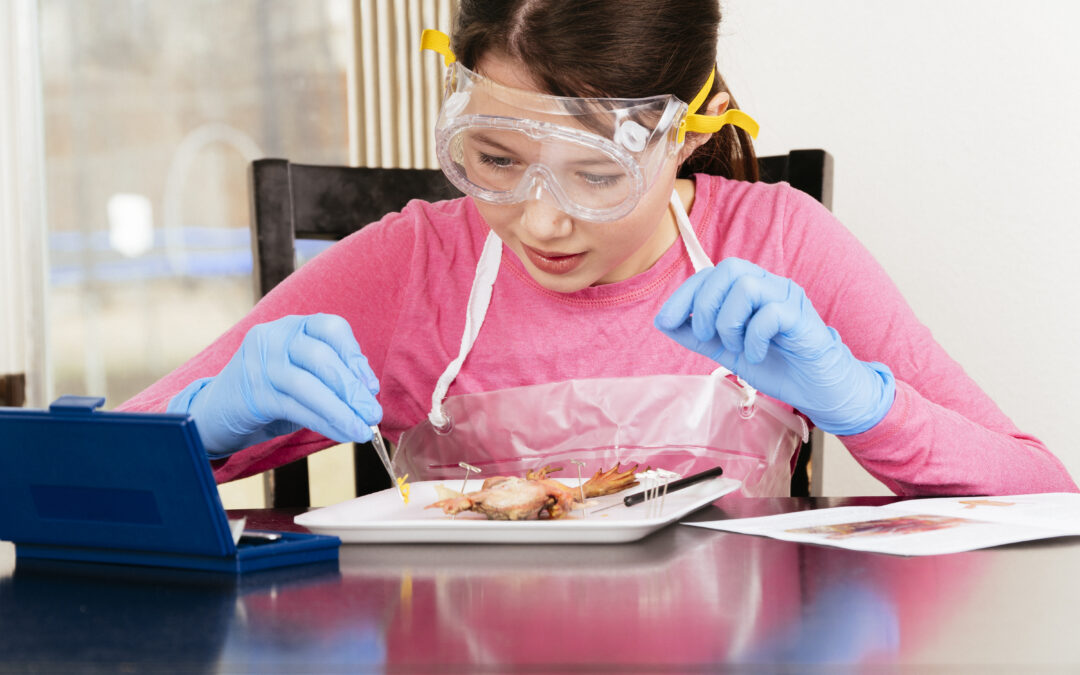Look for signs of life along the shore, such as insects, jellyfish and seaweed from the ocean that have been stranded on the shore, plants growing on rocks, and burrowing animals such as clams, bristle worms, or sand crabs. Look for tracks in the sand or mud near the water. Can you identify what type of animal made those tracks? If the tracks are big enough, you may consider making a cast of the track. Look at the grains of sand close to the water and farther up the beach using the magnifying glass. Do you see a difference in texture, composition, or size? What do you think causes these differences in the sand?
Of course the water itself is teeming with life, both small and large. Tide pools, marshy lakes, and calm, shallow waters along river banks are great places to find larger animals. Use a water net to fish specimens out of these areas, or, if the animals are really quick, use a bucket with bait to catch them. Attach a string to the handle of the bucket, place rocks at the bottom to add weight, and add bread crumbs or crackers as bait (you may want to soak the bread crumbs and crackers so they don’t float as well). Lower the bucket into the water and watch for fish and other creatures to swim into the bucket. Lift the bucket out quickly to capture these creatures for a closer observation. When done, gently release these animals back into the water where you found them. (Make sure not to handle them!)
But not just large animals like fish and turtles live in the waters. There are also a variety of very small creatures, some so small you need a magnifying lens or low-power microscope to see them. Get a sample of water and, using a magnifying glass or microscope, look for tiny creatures and plants. You’ll probably see a variety of marine diatoms and dinoflagellates (very small algae) and protozoans (one-celled organisms – might be tricky to see with just a magnifying lens). You could also take a sample of water home, and look at it under a high-power microscope to see greater cell detail.





